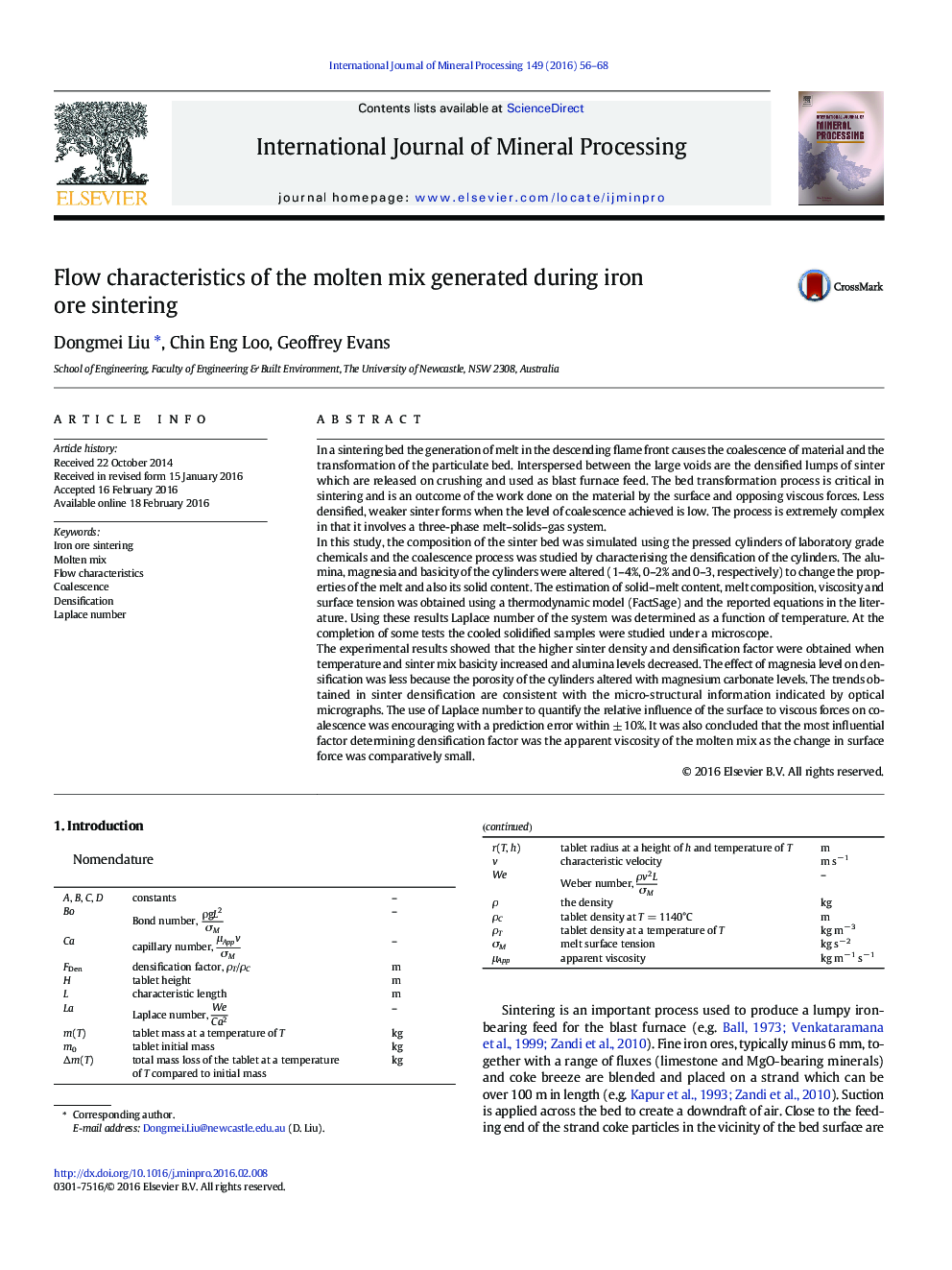| کد مقاله | کد نشریه | سال انتشار | مقاله انگلیسی | نسخه تمام متن |
|---|---|---|---|---|
| 213717 | 1425784 | 2016 | 13 صفحه PDF | دانلود رایگان |
• Coalescence and densification were increased when molten mix was more fluid.
• Reducing alumina and increasing temperature and basicity improved densification.
• Densification factor was analysed based on dimensionless analysis.
• An empirical model described densification factor in relation to system properties.
• Apparent viscosity was the most influential factor determining densification factor.
In a sintering bed the generation of melt in the descending flame front causes the coalescence of material and the transformation of the particulate bed. Interspersed between the large voids are the densified lumps of sinter which are released on crushing and used as blast furnace feed. The bed transformation process is critical in sintering and is an outcome of the work done on the material by the surface and opposing viscous forces. Less densified, weaker sinter forms when the level of coalescence achieved is low. The process is extremely complex in that it involves a three-phase melt–solids–gas system.In this study, the composition of the sinter bed was simulated using the pressed cylinders of laboratory grade chemicals and the coalescence process was studied by characterising the densification of the cylinders. The alumina, magnesia and basicity of the cylinders were altered (1–4%, 0–2% and 0–3, respectively) to change the properties of the melt and also its solid content. The estimation of solid–melt content, melt composition, viscosity and surface tension was obtained using a thermodynamic model (FactSage) and the reported equations in the literature. Using these results Laplace number of the system was determined as a function of temperature. At the completion of some tests the cooled solidified samples were studied under a microscope.The experimental results showed that the higher sinter density and densification factor were obtained when temperature and sinter mix basicity increased and alumina levels decreased. The effect of magnesia level on densification was less because the porosity of the cylinders altered with magnesium carbonate levels. The trends obtained in sinter densification are consistent with the micro-structural information indicated by optical micrographs. The use of Laplace number to quantify the relative influence of the surface to viscous forces on coalescence was encouraging with a prediction error within ± 10%. It was also concluded that the most influential factor determining densification factor was the apparent viscosity of the molten mix as the change in surface force was comparatively small.
Journal: International Journal of Mineral Processing - Volume 149, 10 April 2016, Pages 56–68
